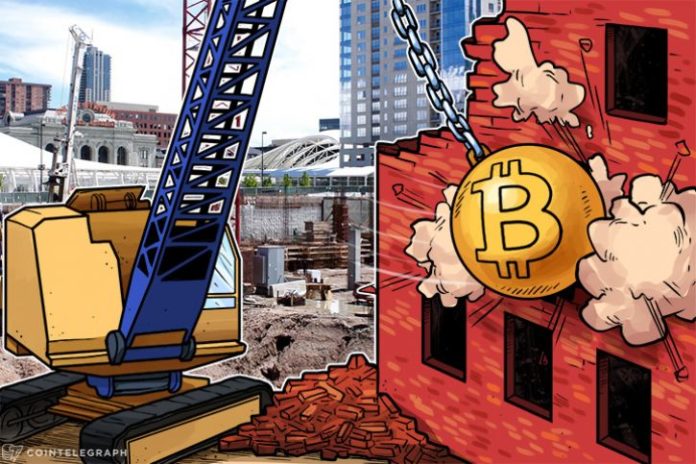[ad_1]
The rapid increase in the price of cryptocurrencies in 2017 has led to most people fearing the formation of a bubble and its impending explosion. What people need to fear are the bubbles in equity markets and real estate, not cryptocurrencies.
Easy money
The genesis of All Time Highs in multiple asset classes can be traced to the 2008 financial crisis.
Post the collapse of Lehman Brothers and the ensuing financial mayhem, central banks around the world resorted to quantitative easing – a euphemism for the unrestricted printing of fiat. It was rationalized saying that the wheels of the financial system of the world had become stuck and needed to be “greased” to get them moving again.
“This easy money policy of Central Banks propped up asset prices, preventing people who had investments from seeing their financial worth getting wiped out”.
The equity markets cheered bad economic data, safe in the knowledge that quantitative easing would continue until the central banks were sure that a second recession was not around the corner.
While quantitative easing has finally tapered out, it will take a long time before the excess liquidity infused during the past few years is sucked out from the market.
Stocks and real estate
Analysis of the price of cryptocurrencies is difficult – there is no set methodology or fundamentals which analysts can base their estimates on. Real estate and equity valuations are relatively straightforward.
On an average, real estate prices tend to go up in line with GDP growth, although there may be pockets which outperform or underperform.
The valuation of companies tends to depend on their earnings, with the price/earnings ratio hovering over a range. If the earnings of a company improve, so does its stock price and market capitalization.
Fundamentals
However, over the past few years, these links to fundamentals have gradually been broken.
“Stock markets and real estate prices are at all time highs, and seem unrelated to the performance of the broader economy”.
Analysts have been talking about a bubble in real estate prices in cities like Toronto and London since 2014, and prices have doubled since then.
Nascent stage
Cryptocurrency is still in its nascent stage and the oldest cryptocurrency, Bitcoin, is less than a decade old. It is to be expected that investing in a firm/technology brings with it the possibility of high rewards, along with high risk.
Cryptocurrency is no different. Those who had the presence of mind to buy Bitcoin when it was trading for a few cents in 2010 are millionaires now. Just because the returns are good doesn’t mean that a bubble is building up.
It could also indicate that the technology behind the asset class is becoming viable, adoption is increasing and the associated risks are decreasing. Even after the rapid increase in price, the total market capitalization of all cryptocurrencies is dwarfed by other asset classes like equities, bonds, or real estate. A single company – Apple – commands five times the market capitalization of all cryptocurrencies in the world put together.
Impact of a bubble burst
“Despite a rapid increase in price, Bitcoin has attracted quite a few new investors to cryptocurrency. It’s unlikely, however, that any of them (barring hardcore gamblers) would have bet their shirt on it”.
This is in contrast to equity markets, where people invest a substantial portion of their savings from a young age.
They have been tutored to believe that investing in diversified equity funds is the best bet to make over the long term. People often leverage themselves to buy their dream home, thinking of it as a long term investment which can be passed on to the next generation.
A crash in either of these markets can wipe out the savings of a large section of people, and would have a broad impact on the economy. Bitcoin is insignificant in comparison, and no government will feel the need to intervene if it crashes.
[ad_2]
Source link









